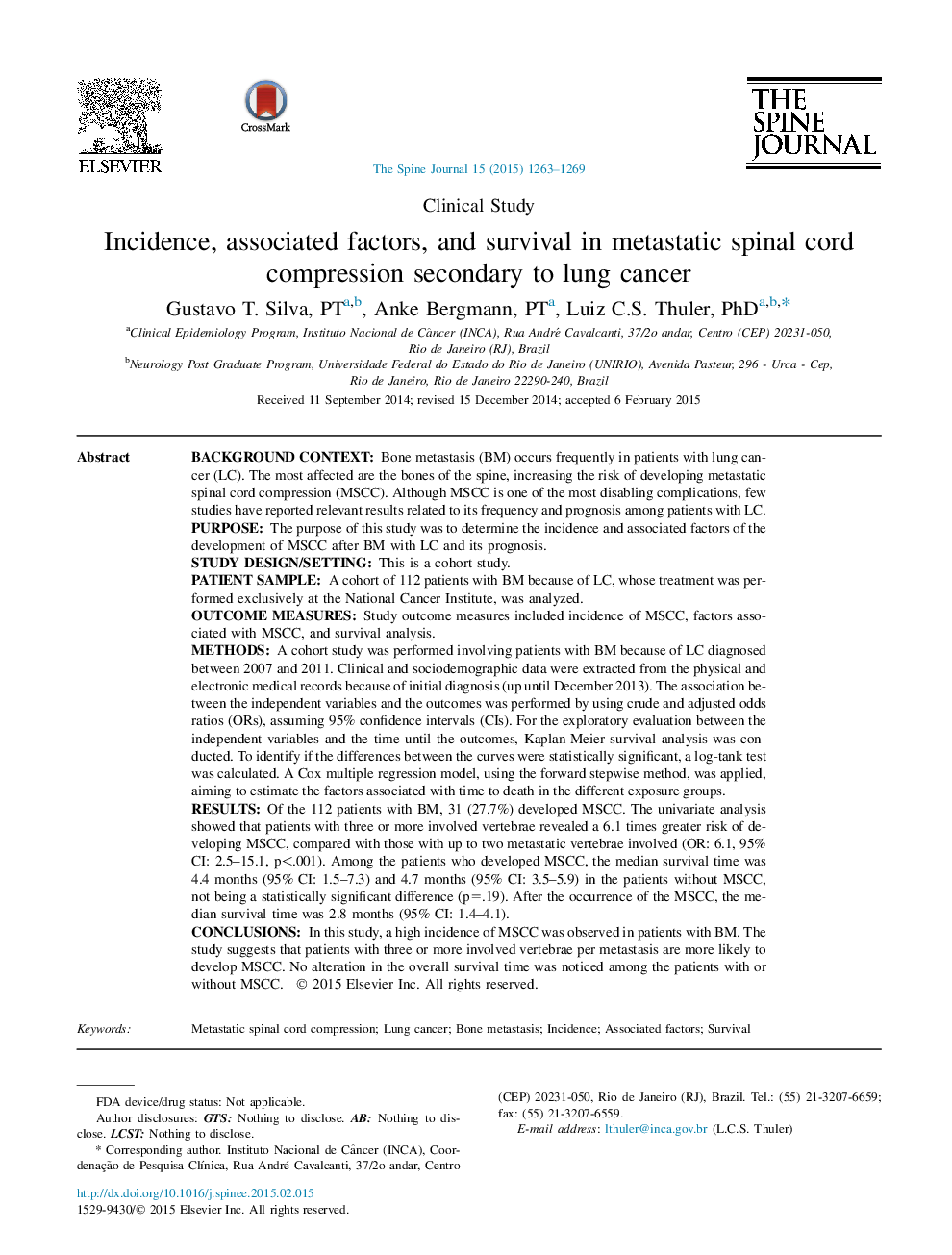| کد مقاله | کد نشریه | سال انتشار | مقاله انگلیسی | نسخه تمام متن |
|---|---|---|---|---|
| 6211896 | 1268561 | 2015 | 7 صفحه PDF | دانلود رایگان |
Background contextBone metastasis (BM) occurs frequently in patients with lung cancer (LC). The most affected are the bones of the spine, increasing the risk of developing metastatic spinal cord compression (MSCC). Although MSCC is one of the most disabling complications, few studies have reported relevant results related to its frequency and prognosis among patients with LC.PurposeThe purpose of this study was to determine the incidence and associated factors of the development of MSCC after BM with LC and its prognosis.Study design/settingThis is a cohort study.Patient sampleA cohort of 112 patients with BM because of LC, whose treatment was performed exclusively at the National Cancer Institute, was analyzed.Outcome measuresStudy outcome measures included incidence of MSCC, factors associated with MSCC, and survival analysis.MethodsA cohort study was performed involving patients with BM because of LC diagnosed between 2007 and 2011. Clinical and sociodemographic data were extracted from the physical and electronic medical records because of initial diagnosis (up until December 2013). The association between the independent variables and the outcomes was performed by using crude and adjusted odds ratios (ORs), assuming 95% confidence intervals (CIs). For the exploratory evaluation between the independent variables and the time until the outcomes, Kaplan-Meier survival analysis was conducted. To identify if the differences between the curves were statistically significant, a log-tank test was calculated. A Cox multiple regression model, using the forward stepwise method, was applied, aiming to estimate the factors associated with time to death in the different exposure groups.ResultsOf the 112 patients with BM, 31 (27.7%) developed MSCC. The univariate analysis showed that patients with three or more involved vertebrae revealed a 6.1 times greater risk of developing MSCC, compared with those with up to two metastatic vertebrae involved (OR: 6.1, 95% CI: 2.5-15.1, p<.001). Among the patients who developed MSCC, the median survival time was 4.4 months (95% CI: 1.5-7.3) and 4.7 months (95% CI: 3.5-5.9) in the patients without MSCC, not being a statistically significant difference (p=.19). After the occurrence of the MSCC, the median survival time was 2.8 months (95% CI: 1.4-4.1).ConclusionsIn this study, a high incidence of MSCC was observed in patients with BM. The study suggests that patients with three or more involved vertebrae per metastasis are more likely to develop MSCC. No alteration in the overall survival time was noticed among the patients with or without MSCC.
Journal: The Spine Journal - Volume 15, Issue 6, 1 June 2015, Pages 1263-1269
